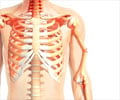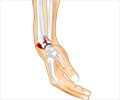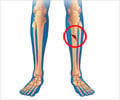
‘Risk of fracture is elevated by 12.8% in children with epilepsy who are on a common anti-seizure medication – oxcarbazepine. The other common drug levetiracetam was however associated with only 7.5% risk of fractures in these children.
’
Tweet it Now
These children were compared with around 271,000 children without epilepsy who did not take anti-seizure medications. Anti-Seizure Drug and Fracture Risk
It was found that oxcarbazepine was related to a higher risk of fracture 12.8% of children with epilepsy, whereas 7.5% risk was associated with levetiracetam and 8.2% without epilepsy.
“Prior to this study, little research had been conducted on how these two commonly prescribed medications impact bone fragility. These findings provide a vital insight into how two commonly prescribed medications impact children and adolescents during a critical period of bone development,” says Daniel Whitney, Ph.D., lead author of the paper and assistant professor of physical medicine and rehabilitation at Michigan Medicine.
No anti-seizure medications come without potential adverse effects. However, it is important to consider the risk for fracture as another factor when evaluating the complexities of drugs choice in children with epilepsy.
Advertisement
“As bone development has distinct periods that establish certain structural aspects, we are interested in studying if some medications alter the needed biology to form the bone’s structure. If so, perhaps we can develop adjunct treatment to counteract these effects, so children can benefit by seizure reduction without weaker bones,” says, Whitney.
Advertisement















